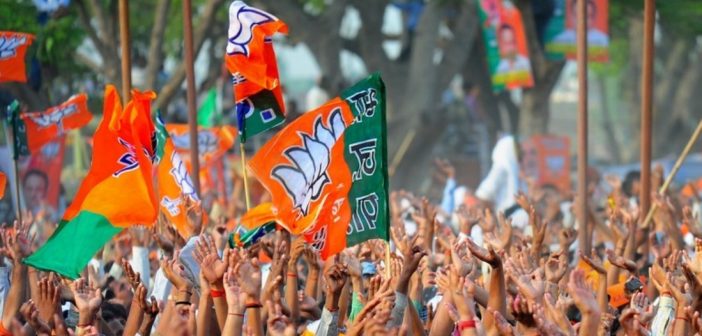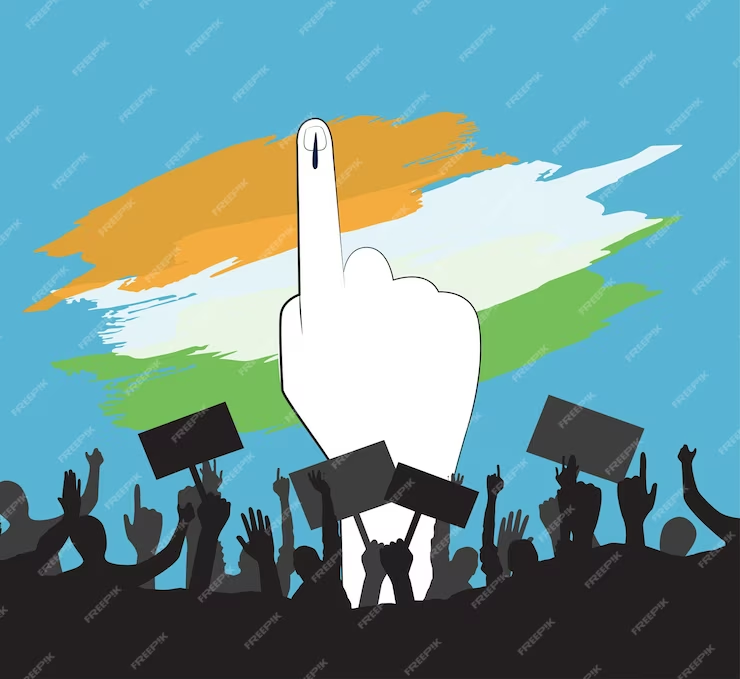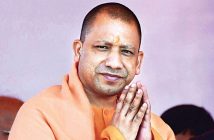Polls have come and gone, but for the temple town of Ayodhya, this is surely an election amid a new beginning bjp.
With the longstanding saga of the Ram Mandir-Babri Masjid dispute being over following a historic judgement from the Supreme Court in 2019,
It is for the first time that the city goes to vote without a shadow of the decades-old controversy that has most profoundly shaped
And defined India’s contemporary politics and played the most crucial role in the Bharatiya Janata Party’s meteoric rise.
The constituency of Ayodhya votes on February 27, along with 60 other seats spread across 11 districts in the fifth round of the ongoing seven-phase Uttar Pradesh elections.
In 2017, the BJP had won 48 of these constituencies.
However, in the 2012 assembly polls, 42 of them were bagged by the Samajwadi Party.
Since 2017, with Yogi Adityanath as the chief minister, ‘Ayodhya’ has also seen geographical expansion, with the district formerly known as Faizabad being given that name.
The other districts that go to polls are Amethi, Raebareli, Sultanpur, Pratapgarh, Kaushambi, Prayagraj, Barabanki, Bahraich, Shravasti, Gonda and Chitrakoot in Bundelkhand.
In the erstwhile Faizabad, now Ayodhya, the BJP had won all the five assembly segments of Rudauli, Milkipur (SC), Bikapur, Gosaiganj and Ayodhya in 2017.
Five years down the line as UP votes again, fast-paced development, and the ongoing construction of the Ram Mandir are the new identity of the temple town.
The BJP will surely hope that the unprecedented attention put on Ayodhya during five years of its rule in the state will also help pull votes, as the ‘new Ayodhya’ also gets in sync with the Hindutva expression.
CAN AYODHYA FACTOR IMPACT NEARBY DISTRICTS?
Though fervour around the Ram Mandir-associated Hindutva has been much lowered with the BJP’s decision not to field Yogi Adityananth from Ayodhya,
the party will still hope that the construction of the Ram temple will be the glue needed for the voters not just in the district but the nearby region as well to stick with it,
especially in the Devipatan belt comprising 16 seats across three districts of Gonda, Bahraich and Shravasti. In 2017,
the BJP had won 14 of them, one each having gone to the Samajwadi Party and Bahujan Samaj Party.
The region has been marked by sharp communal polarisation in the past.
In some constituencies. Muslim voters have a significant presence. T
he other backward classes (OBCs) voters too dominate here but are almost equally split among the Kurmi, Yadavs and the other OBCs.
This had been the region where saffron footprints were first entrenched during the heyday of Mandir politics in the late 1980s.
The Ayodhya-based Hindutva influence has cast a varying degree of influence since then.
The Samajwadi Party will hope that ‘Mandal’ outplays the ‘Kamandal’ in this belt.
A lot depends on the solidarity of the Muslims and the OBCs.
The BJP will bank on the issues of law and order, free ration
and successful implementation of the government’s welfare schemes to give it an advantage.
The ruling party will also hope to continue its hold on neighbouring Barabanki,
the district which is flanked by state capital Lucknow on one end
and Ayodhya on the other. In 2017, the BJP had won five out of the six seats here,
losing one to the SP. In 2012, however, the Samajwadi Party dominated here.
The district with strong pockets of Muslim voters is also a rich farming belt.
From silent Hindutva to caste equations and agrarian issues, all could be factors here.
FROM RAJA BHAIYA TO RAJA OF AMETHI
The fifth phase also sees the royalty dancing to the beats of democracy.
Raghu Raj Pratap Singh or ‘Raja Bhaiya’ of the princely estate of Kunda in Pratapgarh is contesting again on his traditional seat, hoping for a seventh straight win.
He has been representing the Kunda constituency since 1993 as an independent legislator. He also holds a strong influence on nearby constituencies.
In 2017, neighbouring Babaganj was won by Vinod Kumar, an independent contestant supported by Raja Bhaiya.
Raja Bhaiya is now fighting on the ticket of his party Jansatta Dal and hopes to win a few more seats in the region.
However, unlike the past, the Samajwadi Party has fielded a candidate against him this time.
Another big name from a princely estate in an electoral contest is Raja Sanjay Singh of Amethi.
A long-term Congress loyalist, the former MP had left it to join the BJP in 2019.
Now he is contesting the seat on a ticket from the saffron party.
In 2017, the BJP fielded his estranged wife Garima Singh from the same seat.
She won but has been denied the ticket this time.
In Amethi district, the BJP in 2017 won four of the five seats — Tiloi, Salon, Jagdishpur, and Amethi.
MLA Mayankeshwar Sharan Singh of the princely estate of Tiloi is again in the race on a BJP ticket.
DEPUTY CM IN RACE, WHOM WILL APNA DAL FACTOR HELP?
The region from Pratapgarh to Prayagraj via Kaushambi and Phulpur also goes to polls in phase five.
Out of the 12 constituencies of Prayagraj (erstwhile Allahabad), the BJP had won eight in 2017,
its ally Apna Dal one, the SP had won one and the BSP had secured two seats.
The Apna Dal has also won two seats in Pratapgarh district.
All three seats of Kaushambi were won by the BJP.
This time, deputy chief minister and the BJP’s biggest OBC face Keshav Prasad Maurya is contesting from Sirathu in Kaushambi.
Opposite him is Pallavi Patel of the Apna Dal faction led by Krishna Patel.
Pallavi is the younger sister of union minister Anupriya Patel.
The two sisters have chosen different political trajectories.
The faction Apna Dal (Sonelal) led by Anupriya Patel continues to be with the BJP.
The Kurmi/Patel and OBC-based Apna Dal has a significant influence in this region.
The Samajwadi Party will hope that the faction led by Krishna
and Pallavi Patel can outsmart the one of Anupriya, and can help in much-needed seat conversion in the region.
CONGRESS’S LONE FORTRESS
Even amid the saffron tsunami of 2017, the turf that couldn’t be conquered by the BJP was the constituency of Rampur Khas in Pratapgarh.
Veteran Congressmen and stalwart of UP politics Pramod Tiwari had kept the party flag flying here since 1980.
After nine straight wins from the seat, he had vacated it for daughter Aradhna Mishra in 2014 for a bypoll. She won again in 2017.
The Congress will want Aradhna to keep the victory streak going. Opposite her is Nagesh Pratap Singh who, though defeated, had significantly reduced the Congress’s victory margin in 2017.
He was beaten by only 20,000 votes. The BJP will hope he can spring a surprise this time.




